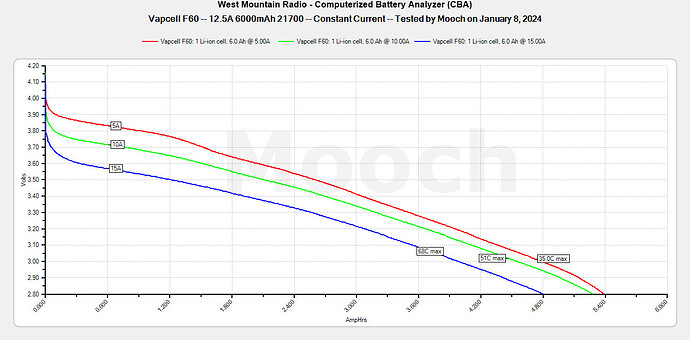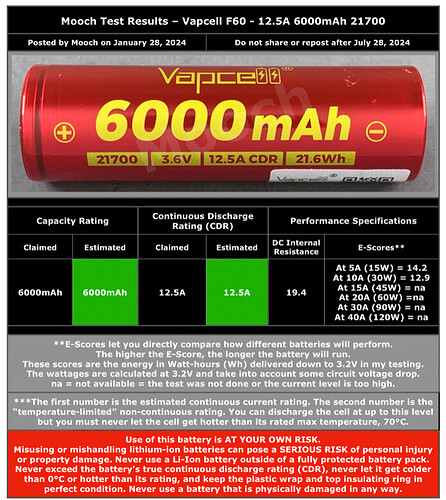These tests below only note my personal opinion for the ESTIMATED ratings for the batteries I tested at the time I tested them. Any battery that is not a genuine Samsung, Sony, Murata, LG, Panasonic, Molicel, or Sanyo can change at any time! This can be one of the hazards of using “rewrapped” or batteries from other manufacturers so carefully research any battery you are considering using before purchasing.
Misusing or mishandling lithium-ion batteries can pose a SERIOUS RISK of property damage, personal injury, or even death. Never use them outside of a fully protected battery pack and you use them at your own risk. Never exceed the battery’s true continuous discharge rating (CDR), never let it get colder than 0°C or hotter than 60°C, and keep the plastic wrap and top insulating ring in perfect condition. Never use a battery that is physically damaged in any way.
Testing batteries at their limits is dangerous and should never be attempted by anyone who has not thoroughly studied the dangers involved, understands the risks, has the proper equipment, and takes all appropriate safety precautions.
If the battery has only one current rating number, or if it only says “max”, then I have to assume the battery is rated at that current level for any type of discharge, including continuous.
Test Results
This is a very good performing cell but others are a bit better. It’s one of a new generation of ultra-high capacity cells that has recently become available and is definitely worth considering if you can get it at a good price. I don’t know what cell Vapcell is wrapping here but it’s probably the FEB 21700-60A or Lishen LR21700SS.
-
This cell ran for the same amount of time at 5A and 10A as the BAK N21700CG-50.
-
The LG M50LT and Samsung 50S ran for a bit longer than this cell.
-
This cell ran for a bit longer than the Molicel P45B at 5A but the same at 10A.
Like any ultra-high capacity cell, if you want to get the full capacity from it you’ll need to run it at a very low level…under 2A-3A for this cell.
This cell’s 12.5A rating seems reasonable. The two cells I tested delivered 6065mAh and 6087mAh. This is good consistency and meets this cell’s capacity spec of 6000mAh.
This is a larger cell than some, both were 21.6mm x 70.9mm.
Continuous Current Discharge Graphs
Ratings and Performance Specs Graphic
18650 Ratings and E-Scores Table:
20700/21700 Ratings and E-Scores Table:
To see how other cells have tested check out this link: Links To All 21700, 26650, 18350, 18500 Battery Tests | E-Cigarette Forum


